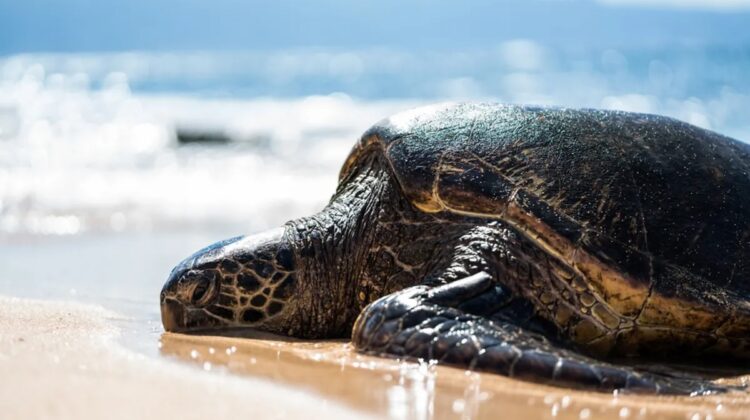
Several of the turtles had stab wounds on their necks and a number had slash marks on their flippers.
A remote Japanese island has seen the death of dozens of sea turtles, many of which had been stabbed in the neck. According to Japanese media, the grisly scene may have been the result of fishermen who tried to free the trapped animals from their nets but ultimately decided to end their suffering.
According to the Asahi Shimbun, an Osaka-based newspaper, last week’s low tide on Kumejima island in Okinawa revealed the bodies of about 30 green sea turtles. The turtles had bloody slash marks on their flippers and several of them had stab wounds on their necks.
Police are reportedly questioning witnesses as part of their investigation into the incident as a possible case of animal cruelty. Authorities have not yet commented on the deaths, but a source “close to the situation” who asked to remain unnamed suggested that a nearby fishing company might be to blame.
They were all caught in fishing nets, a lot of them. According to a source speaking to The Mainichi, the fishery operator claimed, “I untangled some of them and released them into the sea, but I couldn’t free heavy ones, so I stabbed them to get rid of them.”
Chelonia mydas, also known as the green sea turtle, is a species of turtle that can be found in tropical and subtropical seas all over the world. The species and their environment are, however, dealing with growing issues.
The IUCN Red List states that the species is near extinction and therefore endangered.
They are currently facing a declining population and numerous threats, the majority of which are brought about by human activity. Although the destruction of their natural habitat is a serious problem, one of the most damaging elements is the deliberate removal of eggs and adults from nesting beaches.
They frequently become entangled in fishermen’s nets as unintentional bycatch, as demonstrated by the most recent incident.
Their primary sources of food are algae and seagrasses, but they also consume sponges, tiny invertebrates, and leftover fish. Sadly, plastic pollution in their food supply is getting worse. In 2018, researchers studied seven species of sea turtles that were found in three different oceans and discovered that every single one of them had microplastics in their guts.

Leave a Reply